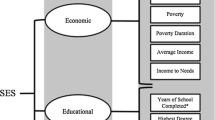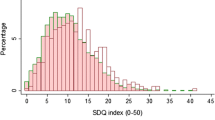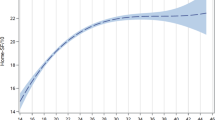Abstract
The Early Childhood Longitudinal Study-Birth Cohort of 2001 represents a unique opportunity to examine the life situations of teenage mothers and their young children in a nationally representative sample. Descriptive and multivariate regression analyses compare teenage mothers and their children to older mothers and their children, examine variation among teenage mothers and their children, and estimate associations between household structures and mothers' work and school involvement at age 2 and children's health and development at age 4½. Results show that compared to children of mothers who never gave birth as teens, teenage mothers' children experience strong socioeconomic disadvantages, and their home environments have some greater risks. Their mothers' parenting behaviors are not rated as favorably, and many measures of their health and development at age 2 are compromised. However, many of these parenting and developmental disparities are explained by teenage mothers' low levels of current socioeconomic status. At least in some domains, teenage mothers' involvement in school and paid work is associated with more favorable child outcomes at age 4½, and living with a single mother and other adults predicts more negative outcomes. Many everyday experiences that are associated with disadvantaged outcomes are quite prevalent among teenage mothers' children, identifying useful targets for policy interventions. These findings suggest that effective social programs implemented in early life may have an opportunity to reduce the early developmental disadvantages of many children of teenage mothers.
Similar content being viewed by others
Notes
Because of ECLS-B confidentiality restrictions, all unweighted Ns are rounded to the nearest 50.
Cohen’s f 2 = (R 2Model 2 − R 2Model 1 )/(1 − R 2Model 2 ), where Model 1 excludes the teen childbearing measures and Model 2 adds them. The effect size cannot distinguish between the effects of the current and prior teen mother indicators.
These cutoffs were calculated by dividing the desired effect size by 1.65 to convert it from the standard normal metric used in most effect size calculations to the logistic metric (Haddock et al. 1998).
Odds ratios are calculated by exponentiating Table 2 logistic regression coefficients. Here, exp(−1.78) = 0.169.
Because of small Ns when dividing Latina teen mothers into foreign- and U.S.-born, we display results for Latinas overall and briefly note some differences between the two subgroups in the text.
References
Baydar, N., Brooks-Gunn, J., & Furstenberg, F. F. J. (1993). Early warning signs of functional illiteracy: Predictors in childhood and adolescence. Child Development, 64(3), 815–829.
Biblarz, T. J., & Raftery, A. E. (1999). Family structure, educational attainment, and socioeconomic success: Rethinking the “pathology of matriarchy”. American Journal of Sociology, 105(2), 321–365.
Boardman, J. D., Powers, D. A., Padilla, Y. C., & Hummer, R. A. (2002). Low birth weight, social factors, and developmental outcomes among children in the United States. Demography, 39(2), 353–368.
Brooks-Gunn, J., & Furstenberg, F. F., Jr. (1986). The children of adolescent mothers: Physical, academic, and psychological outcomes. Developmental Review, 6(3), 224–251.
Byrne, M. W., & Keefe, M. R. (2003). Comparison of two measures of parent-child interaction. Nursing Research, 52(1), 34–41.
Chen, X. -K., Wen, S. W., Fleming, N., Demissie, K., Rhoads, G. G., & Walker, M. (2007). Teenage pregnancy and adverse birth outcomes: A large population based retrospective cohort study. International Journal of Epidemiology, 36(2), 368–373.
Cohen, J. (1988). Statistical power analysis for the behavioral sciences (Second ed.). Hillsdale: Lawrence Erlbaum Associates.
Coley, R. L., & Chase-Lansdale, P. L. (1998). Adolescent pregnancy and parenthood: Recent evidence and future directions. American Psychologist, 53(2), 152–166.
Danoff, N. L., Kemper, K. J., & Sherry, B. (1994). Risk factors for dropping out of a parenting education program. Child Abuse and Neglect, 18(7), 599–606.
Darroch, J. D., Singh, S., Frost, J. J., & Team, T. S. (2001). Differences in teenage pregnancy rates among five developed countries: The roles of sexual activity and contraceptive use. Family Planning Perspectives, 33(6), 244–250, 281.
Duncan, G. J., Brooks-Gunn, J., & Klebanov, P. (1994). Economic deprivation and early childhood development. Child Development, 65(2), 296–318.
Duncan, G. J., Ludwig, J., & Magnuson, K. A. (2007). Reducing poverty through preschool interventions. Future of Children, 17(2), 143–160.
Furstenberg, F. F., Jr. (2003). Teenage childbearing as a public issue and private concern. Annual Review of Sociology, 29, 23–39.
Geronimus, A. T., & Korenman, S. (1993). Maternal youth or family background? On the health disadvantages of infants with teenage mothers. American Journal of Epidemiology, 137(2), 213–225.
Geronimus, A. T., Korenman, S., & Hillemeier, M. M. (1994). Does young maternal age adversely affect child development? Evidence from cousin comparisons in the United States. Population and Development Review, 20(3), 585–609.
Haddock, C. K., Rindskopf, D., & Shadish, W. R. (1998). Using odds ratios as effect sizes for meta-analysis of dichotomous data: A primer on methods and issues. Psychological Methods, 3(3), 339–353.
Hamilton, B. E., Martin, J. A., & Ventura, S. J. (2009). Births: Preliminary data for 2007. National Vital Statistics Reports, 57(12).
Heard, H. E. (2007). Fathers, mothers, and family structure: Family trajectories, parent gender, and adolescent schooling. Journal of Marriage and Family, 69(2), 435–450.
Levine, J. A., Pollack, H., & Comfort, M. E. (2001). Academic and behavioral outcomes among the children of young mothers. Journal of Marriage and the Family, 63(2), 355–369.
Love, J. M., Kisker, E. E., Ross, C. M., Schochet, P. Z., Brooks-Gunn, J., Paulsell, D., et al. (2002). Making a difference in the lives of infants and toddlers and their families: The impacts of Early Head Start. Executive summary. Washington, DC: U.S. Department of Health and Human Services.
Luster, T., Bates, L., Fitzgerald, H., Vandenbelt, M., & Key, J. P. (2000). Factors related to successful outcomes among preschool children born to low-income adolescent mothers. Journal of Marriage and the Family, 62(1), 133–146.
Luster, T., Bates, L., Vandenbelt, M., & Nievar, M. A. (2004). Family advocates’ perspectives on the early academic success of children born to low-income adolescent mothers. Family Relations, 53(1), 68–77.
Marini, M. M. (1984). Age and sequencing norms in the transition to adulthood. Social Forces, 63(1), 229–244.
Moffitt, R. (2003). The role of nonfinancial factors in exit and entry in the TANF program. Journal of Human Resources, 38, 1221–1254.
Mollborn, S., & Lovegrove, P. J. (2011). How teenage fathers matter for children: Evidence from the ECLS-B. Journal of Family Issues, 32(1), 3–30.
Moore, K. A., & Synder, N. O. (1991). Cognitive attainment among firstborn children of adolescent mothers. American Sociological Review, 56(5), 612–624.
Nord, C., Edwards, B., Andreassen, C., Green, J. L., & Wallner-Allen, K. (2006). Early Childhood Longitudinal Study-Birth Cohort (ECLS-B), user’s manual for the ECLS-B longitudinal 9-month-2-year data file and electronic codebook (NCES 2006–046). Washington, DC: U.S. Department of Education, National Center for Education Statistics.
Turley, R. N. L. (2003). Are children of young mothers disadvantaged because of their mother’s age or family background? Child Development, 74(2), 465–474.
U.S. Department of Education, NCES. (2007). Early Childhood Longitudinal Study-Birth Cohort: U.S. Department of Education, National Center for Education Statistics.
Acknowledgments
This research is based on work supported by grants from the Council on Research and Creative Work at the University of Colorado at Boulder and from the Department of Health and Human Services, Office of Public Health Service (#1 APRPA006015-01-00).
Author information
Authors and Affiliations
Corresponding author
Rights and permissions
About this article
Cite this article
Mollborn, S., Dennis, J.A. Investigating the Life Situations and Development of Teenage Mothers’ Children: Evidence from the ECLS-B. Popul Res Policy Rev 31, 31–66 (2012). https://doi.org/10.1007/s11113-011-9218-1
Received:
Accepted:
Published:
Issue Date:
DOI: https://doi.org/10.1007/s11113-011-9218-1




